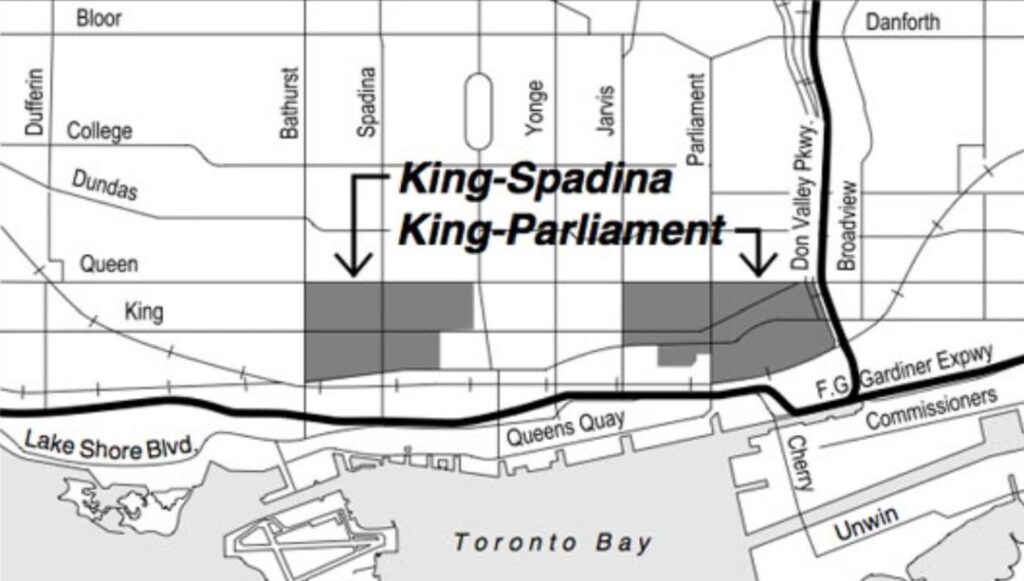Why Toronto has the Highest Number of Condominiums in the World by Volume
By: Quintin Johnstone, Founder & CEO Samsonshield Inc. / Riskboss Inc.
2020 marked a very important milestone for the City of Toronto. It marked the fact that Toronto has more high-rise residential condominiums than anywhere else in the world (Not including the GTA). This fact is staggering but true. But why is this happening here in Toronto?
In the late 1970s through to the late 1980s, demographic shifts favoured the suburbs and regional areas outside of Toronto leaving the downtown core barren after working hours. Downtown Toronto was once the destination place for industry. However, this demographic shift moved large businesses to Mississauga and York Region to follow the workforce being lured by tax incentives offered by regional jurisdictions.
Crime rates rose. Late night clubs, booze cans, whisky joints and strip clubs littered the Toronto core. Lines of street prostitutes marking out their territory in various neighbours were the norm every night of the week with Johns driving through the ‘prostitution tracks.’ Used books stores and used furniture stores lined Queen Street West. Only a few condominiums were built. The lakeshore was barren, and for example, the Queens Quay Terminal building had partially collapsed in on itself. A grim future for Toronto’s downtown core was the topic of conversation and concern. Not as bad as Manhattan at the time, but Toronto was getting there.
It was Mayor Barbara Hall during her reign (1994 to 1997) and City Council that changed zoning to allow for residential zoning for properties abandoned and left empty by industry. The Kings Regeneration Planning Initiative dubbed the “2 Kings Policy” was instrumental in revitalizing the downtown core in two areas, King Street East and Parliament, and also, King Street west of Spadina Avenue.
This policy change cost nothing but fast forward and the 2 Kings Policy sparked unprecedented growth in the downtown core. It made Toronto the number one hotspot for condominiums in the world by volume. With this, large business has returned to the City core to follow the workforce. All great from a city vibrancy perspective but certainly not without very high density and congestion issues.
Driving the market is the demographic shift to the city core from the suburbs, are particularly the Baby Boomer and Millennial generations . Immigration is also another driving factor of this market. Unlike the mid to late 1980s where speculators bought multiple units with very little money down only to be hugely affected by the 1989(90) recession, the current condominium boom has been sustained in the GTA since the mid-1990s with no end in sight
This condominium boom has been sustained by the lack of residential apartments being built by developers in Ontario for many decades. With the lack of residential apartments, condominiums have been a natural replacement and destination for renters.
Condominiums have also taken over from traditional basement apartments that were a fixture in the GTA landscape until the mid 1990s. The demographic shift to the suburbs forced owners of large downtown homes to turn them into rooming houses. This coincided with the socio-economic decline of many areas in the inner core of the city. Now multi-residential properties are being transformed on mass back to single family residential homes, particularly in the Toronto core as the demographic shifts continue to trend to this area.
Where are we going from here? The City of Toronto performed a study to redevelop the core with a twenty-five-year vision. According to the City of Toronto website,
“TOcore is an initiative to prepare and implement a new plan for Toronto’s Downtown. A series of five infrastructure-related strategies have been developed to support implementation. These strategies cover community facilities, parks and public realm, mobility, energy and water. The Downtown Plan is a 25-year vision that sets the direction for the city centre as the cultural, civic, retail and economic heart of Toronto and as a great place to live.” [Excerpt & Picture from City of Toronto]
The Study area is bounded by Lake Ontario to the south, Bathurst Street to the west, the mid-town rail corridor and Rosedale Valley Road to the north and the Don River to the east. Accompanying this plan was the rezoning of largely empty commercial buildings to residential communities that helped spark a large-scale demographic shift back to downtown Toronto. Signs of significant gentrification is well underway.
The gentrification of Distillery District (to the south east) coincided with the redevelopment of Yonge Street (to the west) and the lakeshore where there is a massive investment in commercial and residential condominium properties.
By the time the 2 Kings Policy was implemented, business had already long left downtown Toronto. Toronto was in trouble. This is a case where innovative government officials created the structure that became the cornerstone of what downtown Toronto is today, and all at zero cost. Certainly, something to think about.
